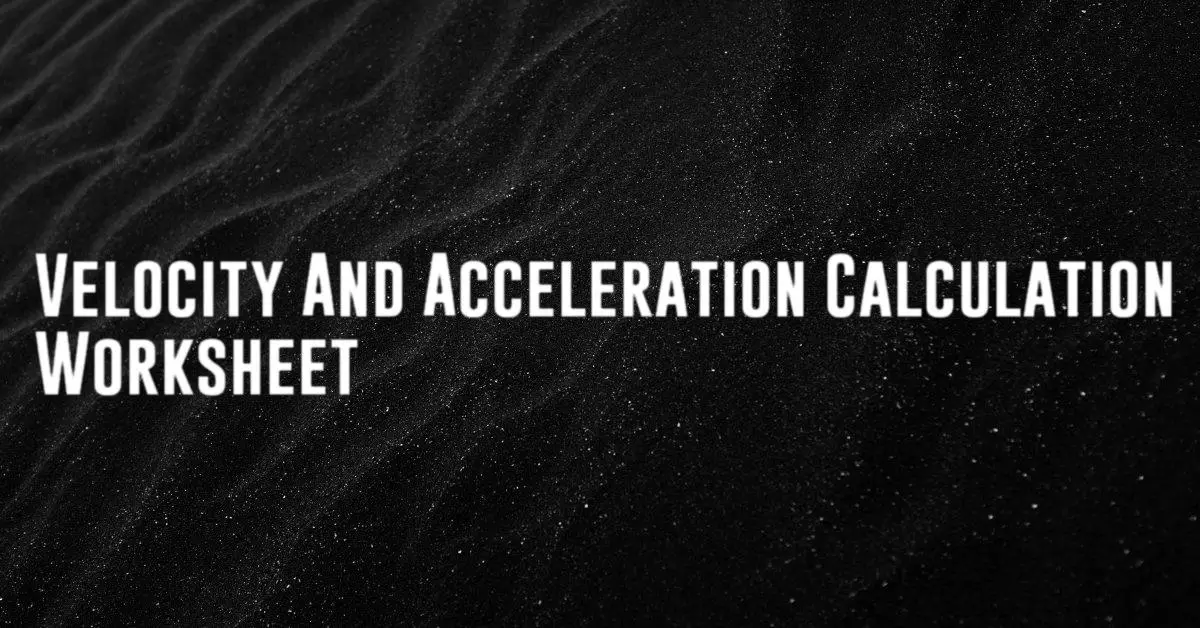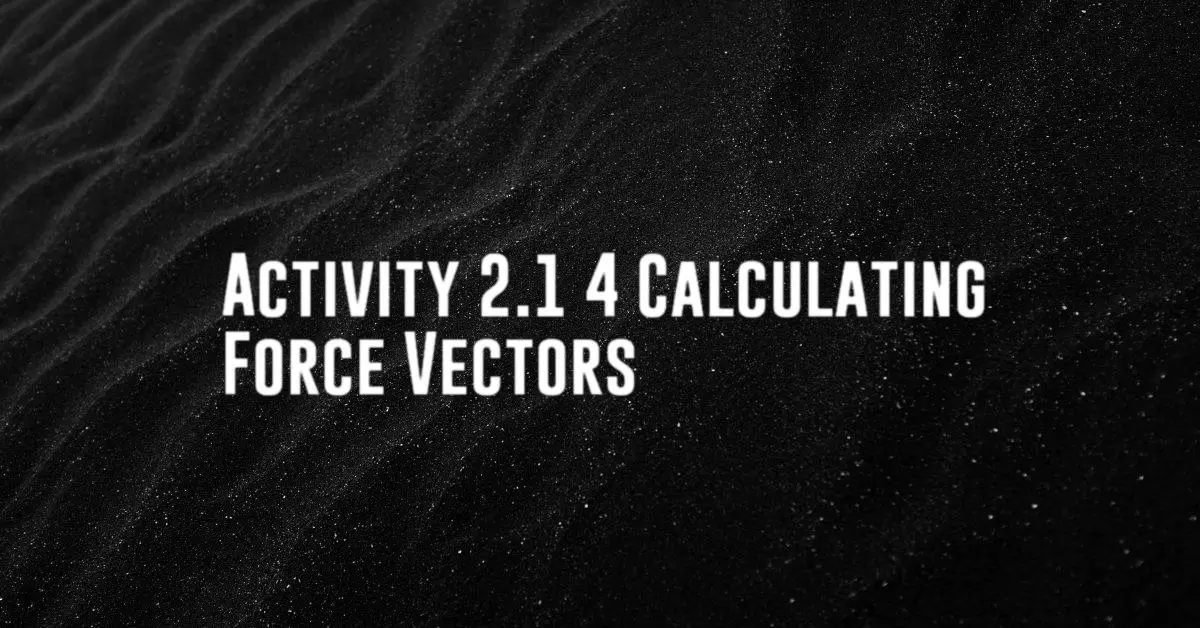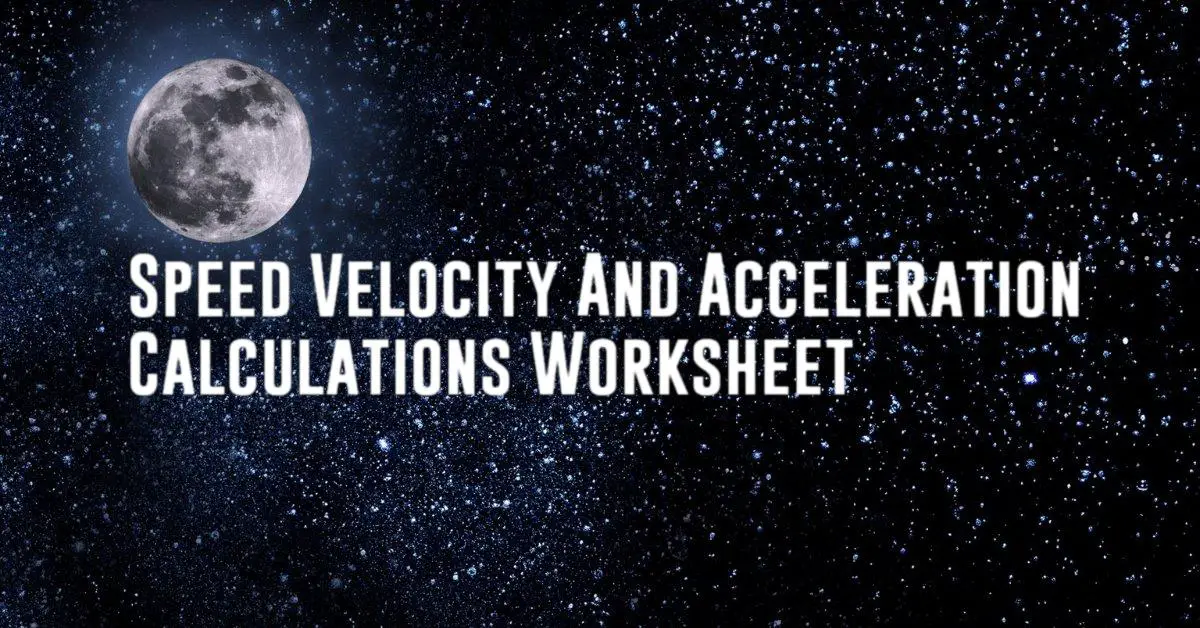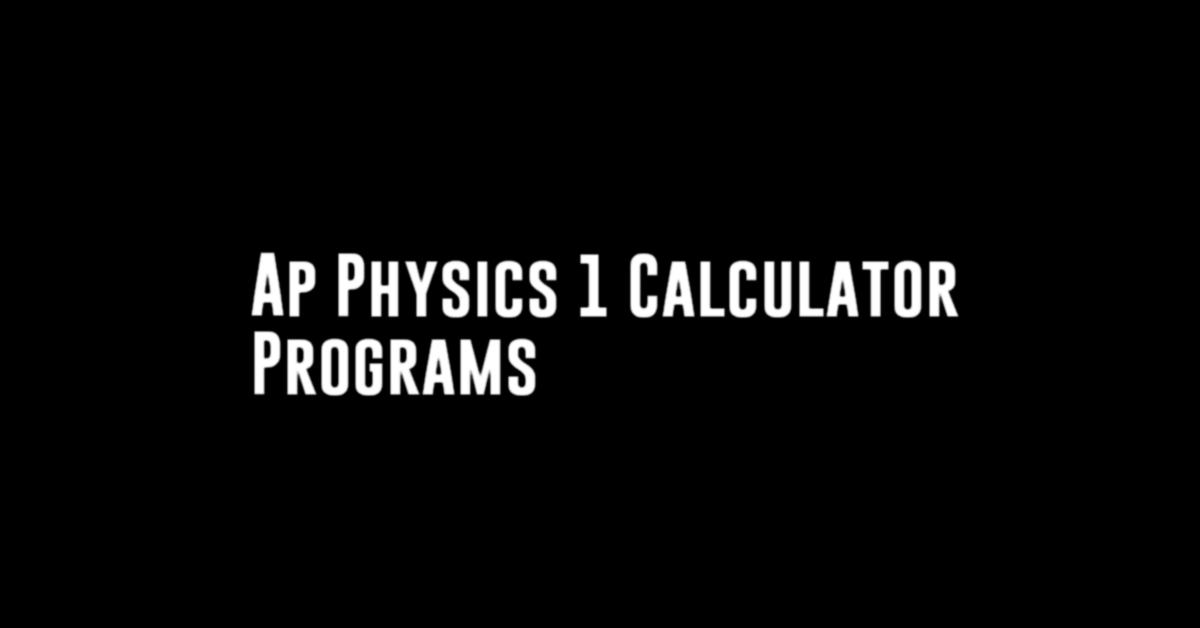Velocity And Acceleration Calculation Worksheet
Velocity and acceleration are concepts that are fundamental in the field of physics. Understanding how to calculate these values is essential for solving problems involving motion and forces. In this worksheet, we will explore the formulas and methods used to calculate velocity and acceleration in various scenarios.
What is Velocity?
Velocity is a vector quantity that indicates the speed of an object in a specific direction. It is defined as the rate at which an object changes its position. The formula to calculate velocity is:

Velocity = (Change in Position) / (Change in Time)
In other words, velocity is the displacement of an object divided by the time taken to cover that distance. The SI unit of velocity is meters per second (m/s).
What is Acceleration?
Acceleration is the rate at which an object changes its velocity. It is also a vector quantity that includes both the magnitude and direction of the change in velocity. The formula to calculate acceleration is:
Acceleration = (Change in Velocity) / (Change in Time)
Accelerations can be positive, negative, or zero depending on the direction and speed of the object. The SI unit of acceleration is meters per second squared (m/s^2).
Calculating Velocity and Acceleration
When calculating velocity and acceleration, it is important to consider the initial and final values of the position and velocity of an object. The following steps can be followed to calculate these values:
1. Determine the initial and final position of the object.
2. Calculate the change in position by subtracting the initial position from the final position.
3. Determine the initial and final velocity of the object.
4. Calculate the change in velocity by subtracting the initial velocity from the final velocity.
5. Divide the change in position by the change in time to calculate velocity.
6. Divide the change in velocity by the change in time to calculate acceleration.
Example Problems
Let’s walk through some example problems to better understand how to calculate velocity and acceleration:
1. An object moves from point A to point B in 5 seconds with a constant velocity of 2 m/s. Calculate the velocity of the object.
Initial position (A) = 0m
Final position (B) = 10m
Change in position = 10m – 0m = 10m
Change in time = 5s
Velocity = 10m / 5s = 2 m/s
2. An object accelerates from rest to a velocity of 10 m/s in 2 seconds. Calculate the acceleration of the object.
Initial velocity = 0 m/s
Final velocity = 10 m/s
Change in velocity = 10 m/s – 0 m/s = 10 m/s
Change in time = 2s
Acceleration = 10 m/s / 2s = 5 m/s^2
Conclusion
Velocity and acceleration are important concepts in physics that help us understand how objects move and interact with each other. By following the formulas and steps outlined in this worksheet, you can easily calculate these values for various scenarios. Practice solving problems involving velocity and acceleration to improve your understanding and problem-solving skills in physics.






